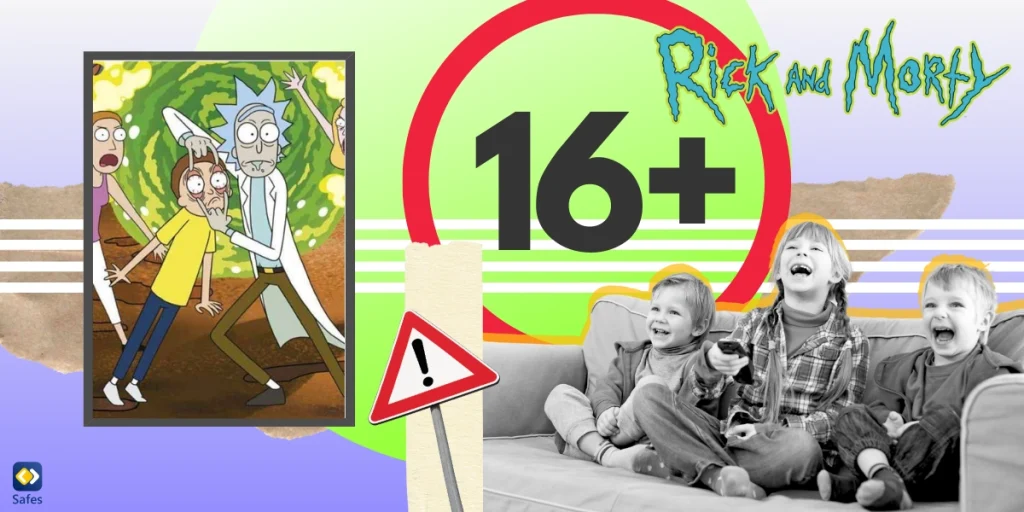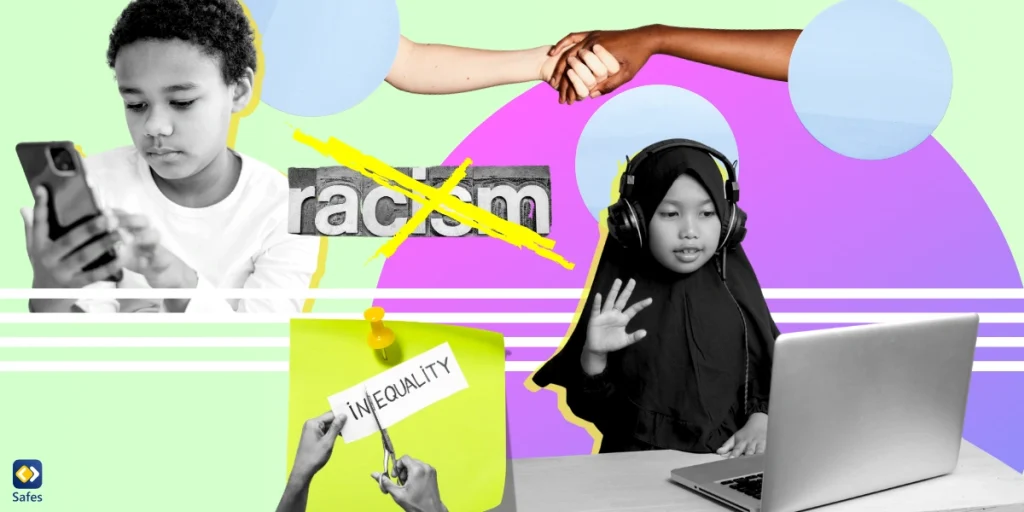Public Wi-Fi networks are widely available, offering convenience for travelers, students, and professionals. However, using these networks without precautions can expose you to various cyber risks. This guide outlines how to use a public Wi-Fi network safely, the dangers of public Wi-Fi, the best practices for safe usage, and how tools like Safes Family can protect your family’s digital activities.
Download and Start Your Free Trial of the Safes Parental Control App
What is a Public Wi-Fi Network?
Wi-Fi networks are wireless systems that allow devices like smartphones, tablets, or computers to connect to the internet or communicate with each other without cables. They work through radio waves transmitted from a router, enabling internet access within a specific range. For parents, Wi-Fi is the gateway to online access for their kids, but understanding the differences between public and private Wi-Fi is crucial for ensuring safety.
Public Wi-Fi networks are those available in shared spaces like cafes, airports, or libraries, often free and open to anyone. These networks are convenient but lack robust security measures, making them vulnerable to cyber threats like data interception or malware. Children using public Wi-Fi for gaming, browsing, or schoolwork could unknowingly expose personal data to hackers.
Private Wi-Fi networks, in contrast, are usually home or office networks secured with password and encryption protocols like WPA2 or WPA3. These networks are safer because access is restricted to authorized users. For parents, setting up and managing a secure private network at home ensures a safer online environment for their children, reducing the risks associated with unsecured public connections.
What are the Four Risks of Using a Public Wi-Fi Network?
The four main risks of using a public Wi-Fi network include the following:
- Data Interception: Public Wi-Fi networks often lack encryption, leaving transmitted data vulnerable to interception. Hackers can use “man-in-the-middle” attacks to eavesdrop on data exchanges, including login credentials, personal messages, and other sensitive information. Children, who may not recognize unsafe practices like logging into unsecured sites, are particularly at risk.
- Malware Distribution: Unsecured public Wi-Fi can serve as a conduit for malware attacks. Hackers may set up fake networks to distribute malicious software, which can infect devices and compromise data. Children downloading apps, games, or files over public Wi-Fi are especially susceptible to unintentionally installing malware, potentially endangering family devices.
- Fake Hotspots: Cybercriminals can create rogue Wi-Fi hotspots that appear legitimate to unsuspecting users. When children connect to these networks, hackers gain direct access to their devices. This can lead to data theft, account compromise, or exposure to inappropriate content, making vigilance crucial for families.
- Device Hacking: Public Wi-Fi often lacks robust security protocols, enabling hackers to exploit vulnerabilities in connected devices. Attackers can remotely access devices, steal data, or monitor activities. For children, this risk escalates if their devices are not equipped with sufficient protective measures, such as updated software or secure VPNs.
Best Practices for Using Public Wi-Fi Safely
Some best practices to secure your computer as a public Wi-Fi device include:
- Verify the Network Name: Always confirm the name of the network with the staff at the establishment. Avoid connecting to open networks with vague or suspicious names.
- Use a VPN: A Virtual Private Network (VPN) encrypts your data, making it unreadable to hackers. VPNs are essential tools for securing public Wi-Fi connections.
- Enable HTTPS: When browsing websites, ensure they use HTTPS instead of HTTP. HTTPS provides encryption for data exchanged between your browser and the website.
- Disable Auto-Connect: Turn off the automatic Wi-Fi connection feature on your device to prevent it from connecting to unsafe networks without your knowledge.
- Use Two-Factor Authentication (2FA): Enable 2FA for all critical accounts, adding an extra layer of security even if login credentials are compromised.
- Turn Off File Sharing: Disable file sharing and AirDrop (on iOS) when using public Wi-Fi to prevent unauthorized access to your files.
- Keep Your Software Updated: Ensure your operating system, browser, and antivirus software are updated to protect against the latest threats.

What Data Can Hackers Steal from Your Children if They Hack Through Public Wi-Fi?
When children connect to unsecured public Wi-Fi without adequate safeguards, hackers can intercept various forms of data. Personal information like names, addresses, email credentials, or even school details stored in apps or accounts can be easily captured. Cybercriminals can exploit these details for identity theft, phishing scams, or selling the information on the dark web.
Hackers can also target sensitive login credentials for social media accounts, games, or streaming platforms used by children. For instance, gaining access to a child’s gaming profile could lead to unauthorized purchases or interactions with malicious actors. Similarly, personal photos or messages transmitted over public Wi-Fi are vulnerable to interception, exposing children to risks like cyberbullying or blackmail.
To minimize these risks, parents should ensure children use secure networks, VPNs, and encrypted websites (HTTPS). Additionally, educating children about avoiding suspicious links, disabling automatic connections to public networks, and regularly changing passwords adds another layer of security. Simple precautions can greatly reduce the likelihood of data breaches.
Can Hackers Attack Parents of Children Using Public Wi-Fi?
Yes, hackers can target parents indirectly through their children’s use of public Wi-Fi. For example, if a hacker gains access to a child’s device, they could extract saved passwords or family-related data stored in apps or cloud services. This could lead to unauthorized access to parental accounts, including banking, shopping, or social media platforms.
Additionally, malware installed on a compromised device can infiltrate home networks when the child reconnects their device. This opens the door for hackers to attack other devices on the network, including those used by parents for sensitive activities like work or financial transactions. Data harvested from family interactions, such as shared emails or calendar events, could also provide valuable insights for phishing or identity theft schemes.
To mitigate these threats, parents should enforce strong device security measures, such as regular software updates, antivirus protection, and network firewalls. Setting up separate accounts for children on shared devices and teaching them about safe internet habits can prevent unintentional exposure to cyber threats that might impact the entire family.
Parental Control: A Key to Family Safety
Parental control apps like Safes Family can significantly enhance children’s safety when using public Wi-Fi and VPNs by ensuring their online activity is protected from cyber threats. Safes Family monitors the networks children connect to, ensuring they only use trusted and secure Wi-Fi connections. By blocking unsafe or unknown networks, the app reduces the risk of children accidentally connecting to malicious hotspots, which are often exploited by hackers for data theft or malware distribution.
Safes Family can also integrate VPN management as part of its parental control suite. It ensures that children use reputable VPN services when accessing public networks, automatically encrypting their online traffic to protect sensitive information. With built-in reporting features, parents can track which networks their children are using and verify that VPNs are enabled during critical moments, adding an extra layer of security against potential breaches.
Additionally, the app educates parents about cybersecurity risks and simplifies managing their children’s online safety. By combining network security features with content filtering and device monitoring on iOS and Android, Safes Family provides comprehensive protection tailored to family needs. Parents can feel confident that their children are not only shielded from immediate risks on public Wi-Fi but also practicing safer internet habits under supervision.
Conclusion
Public Wi-Fi offers convenience but comes with significant risks. Understanding the dangers and following safe practices can protect your data and devices. With tools like VPNs and parental control apps, families can enjoy the benefits of connectivity without falling victim to cyber threats. Protect your child’s online safety with Safes Family! Start your free trial today and enjoy peace of mind knowing their public Wi-Fi and VPN usage is secure.
Your Child’s Online Safety Starts Here
Every parent today needs a solution to manage screen time and keep their child safe online.
Without the right tools, digital risks and excessive screen time can impact children's well-being. Safes helps parents set healthy boundaries, monitor activity, and protect kids from online dangers—all with an easy-to-use app.
Take control of your child’s digital world. Learn more about Safes or download the app to start your free trial today!




